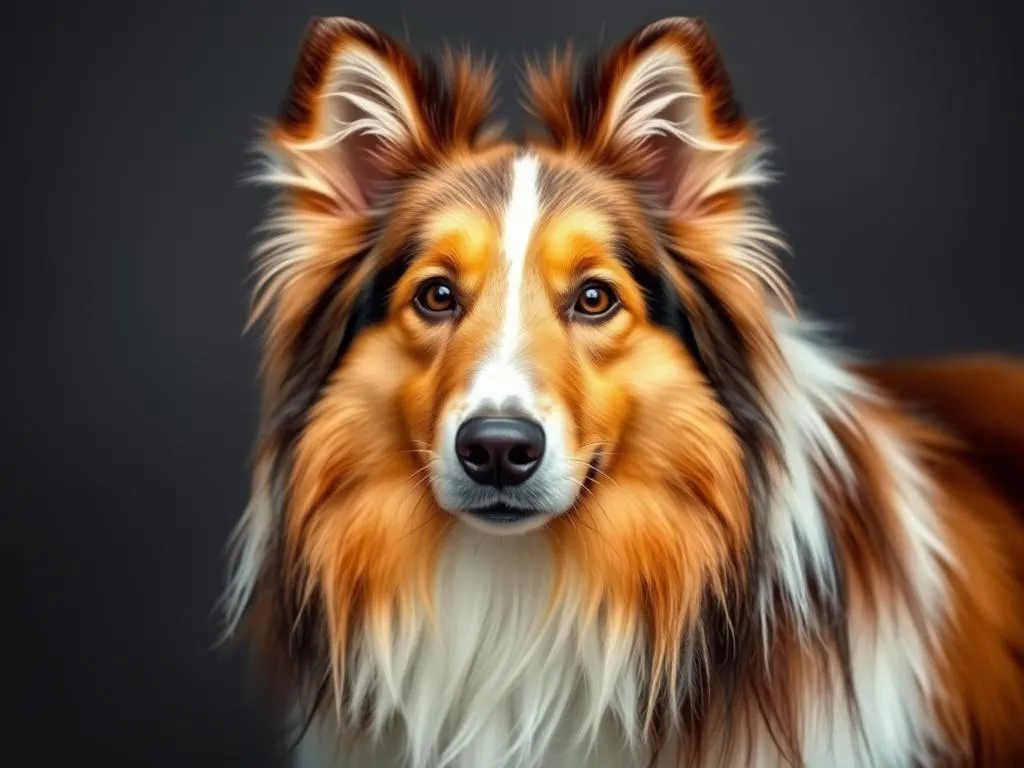
Introduction
The Shetland Sheepdog, affectionately known as the Sheltie, is a charming and intelligent breed that has captured the hearts of dog lovers worldwide. Known for their agility, loyalty, and beautiful appearance, Shelties make excellent companions for families and individuals alike. Understanding the characteristics, history, and care needs of this breed is crucial for anyone considering adding a Sheltie to their home.
History of the Shetland Sheepdog
Origin and Ancestry
The roots of the Shetland Sheepdog can be traced back to the Shetland Islands, a group of rugged islands located northeast of Scotland. These dogs were bred to assist in herding and protecting livestock, particularly sheep, in the harsh island environment. The Shetland Sheepdog shares its ancestry with the Collie breed, which influenced its development both in appearance and temperament.
Development as a Herding Dog
In the early days, Shelties were utilized primarily as herding dogs. Their small size allowed them to maneuver easily among the sheep, and their intelligence made them quick learners. Over time, the breed evolved not only to serve as a working dog but also as a beloved companion. The Sheltie’s herding instincts are still evident today, and many enjoy participating in herding trials and activities.
Recognition by Dog Clubs
The Shetland Sheepdog gained recognition in the early 20th century. The American Kennel Club (AKC) officially recognized the breed in 1911, while the United Kennel Club (UKC) followed suit in 1914. This recognition helped solidify the Sheltie’s status as a distinct breed and contributed to its growing popularity across various countries.
Physical Characteristics
Size and Weight
A typical Shetland Sheepdog stands between 13 to 16 inches tall at the shoulder. Males generally weigh between 20 to 30 pounds, while females are slightly lighter, typically weighing 18 to 25 pounds. This size makes them a manageable breed for families living in both urban and rural settings.
Coat and Color
One of the most striking features of the Sheltie is its double coat, which consists of a soft, dense undercoat and a longer, straight outer coat. This unique coat structure not only provides insulation but also helps protect the dog from harsh weather conditions. Common colors for Shelties include:
- Sable (golden to red)
- Tri-color (black, white, and tan)
- Blue merle (gray with black patches)
- Black and white
The variety of colors and patterns adds to the breed’s appeal, making each Sheltie unique.
Distinctive Features
The Shetland Sheepdog possesses a distinctive expression, characterized by its almond-shaped eyes that convey intelligence and alertness. Their ears are moderately sized, and they can either stand erect or fold over, depending on the individual dog. These features contribute to the breed’s overall charm and make them easily recognizable.
Temperament and Personality
General Temperament Traits
Shelties are known for their intelligent, loyal, and playful nature. They are eager to please and thrive on positive reinforcement training methods. This breed is often described as affectionate, making them great companions who enjoy spending time with their families. However, they can also be reserved around strangers, showcasing their instinctual herding tendencies.
Suitability for Families
The Shetland Sheepdog is particularly well-suited for families with children. Their playful and gentle demeanor makes them excellent playmates. Additionally, Shelties often get along well with other pets, although early socialization is vital to ensure they develop friendly relationships with animals outside their household.
Socialization Needs
Early training and socialization are crucial for the Sheltie. They can be shy or reserved if not properly introduced to various environments, people, and experiences. Regular exposure to different situations will help them develop confidence and reduce the likelihood of behavioral issues, such as excessive barking or anxiety.
Care and Maintenance
Grooming Requirements
The grooming needs of a Shetland Sheepdog are moderate to high due to their double coat. Regular brushing, ideally two to three times a week, is essential to prevent matting and manage shedding. During the shedding season, usually spring and fall, daily brushing may be necessary to keep their coat healthy and free of loose fur.
Exercise Needs
Shelties are energetic dogs that require regular exercise to maintain their physical and mental health. A minimum of 30 to 60 minutes of exercise each day is recommended. This can include walks, playtime in the yard, or engaging in dog sports like agility and obedience training. Their herding instincts also make them enjoy games that involve chasing or retrieving.
Nutrition and Diet
A balanced diet is crucial for the health of a Shetland Sheepdog. Quality dog food formulated for their size and age should be provided. Puppies, adults, and senior dogs have different nutritional needs, so it’s important to choose the right food for each life stage. Always consult with a veterinarian to determine the best feeding plan and portion sizes for your Sheltie.
Health Considerations
Common Health Issues
While generally healthy, the Shetland Sheepdog is prone to certain genetic conditions. Common health issues include hip dysplasia, progressive retinal atrophy (PRA), and thyroid problems. Regular veterinary check-ups and screenings can help catch these issues early, ensuring your dog lives a long and healthy life.
Regular Veterinary Care
Routine veterinary care is essential for Shelties. Regular check-ups, vaccinations, and dental cleanings contribute to their overall health and well-being. Keeping up to date with preventive care can help reduce the risk of serious health issues later in life.
Lifespan and Aging
The average lifespan of a Shetland Sheepdog is around 12 to 14 years. As they age, their care needs may change, requiring adjustments in diet, exercise, and health monitoring. Providing a comfortable environment and regular vet visits will help ensure a happy and healthy senior life for your Sheltie.
Training and Behavior
Basic Training Techniques
Training a Shetland Sheepdog should start early, as they are eager learners. Consistent, positive reinforcement techniques work best. Using treats, praise, and playtime as rewards can motivate Shelties to learn commands and behaviors quickly. Basic obedience training is essential for a well-mannered companion.
Advanced Training and Activities
Shelties excel in advanced training and dog sports. Their intelligence and agility make them suitable for obedience competitions, agility trials, and even herding events. Engaging in these activities not only provides physical exercise but also stimulates their minds, preventing boredom-related behaviors.
Addressing Behavioral Problems
Common behavioral issues among Shetland Sheepdogs include excessive barking and separation anxiety. Early intervention through training and socialization can mitigate these problems. Providing mental stimulation, such as puzzle toys and interactive games, can also help keep them engaged and reduce anxiety.
Living with a Shetland Sheepdog
Ideal Living Environment
While Shetland Sheepdogs can adapt to various living environments, they thrive in homes with access to a yard where they can play and explore. They can do well in apartments, provided they receive sufficient exercise and mental stimulation. It’s essential to ensure they have space to move and play safely.
Compatibility with Owners’ Lifestyles
The Sheltie is an adaptable breed that can fit into both active and less active households. However, they require daily exercise and mental engagement, making them ideal for families that enjoy outdoor activities. Owners who lead a more sedentary lifestyle should be prepared to commit to regular walks and play sessions to meet their Sheltie’s needs.
Adoption vs. Buying
When considering a Shetland Sheepdog, prospective owners face the decision of adopting from a shelter or buying from a breeder. Adoption offers the chance to provide a loving home to a dog in need, while purchasing from a reputable breeder can ensure specific health clearances and lineage. Each option has its pros and cons, and it’s essential to carefully consider your choice based on your circumstances and preferences.
Conclusion
The Shetland Sheepdog is a remarkable breed known for its intelligence, loyalty, and playful nature. With a rich history as a herding dog and a loving companion, Shelties make excellent additions to any family. Understanding their care needs, health considerations, and training requirements is vital for prospective owners. The rewards of owning a Sheltie are immense, providing joy, companionship, and endless love throughout their lives. Whether you choose to adopt or purchase, welcoming a Sheltie into your home promises to be a fulfilling experience.









